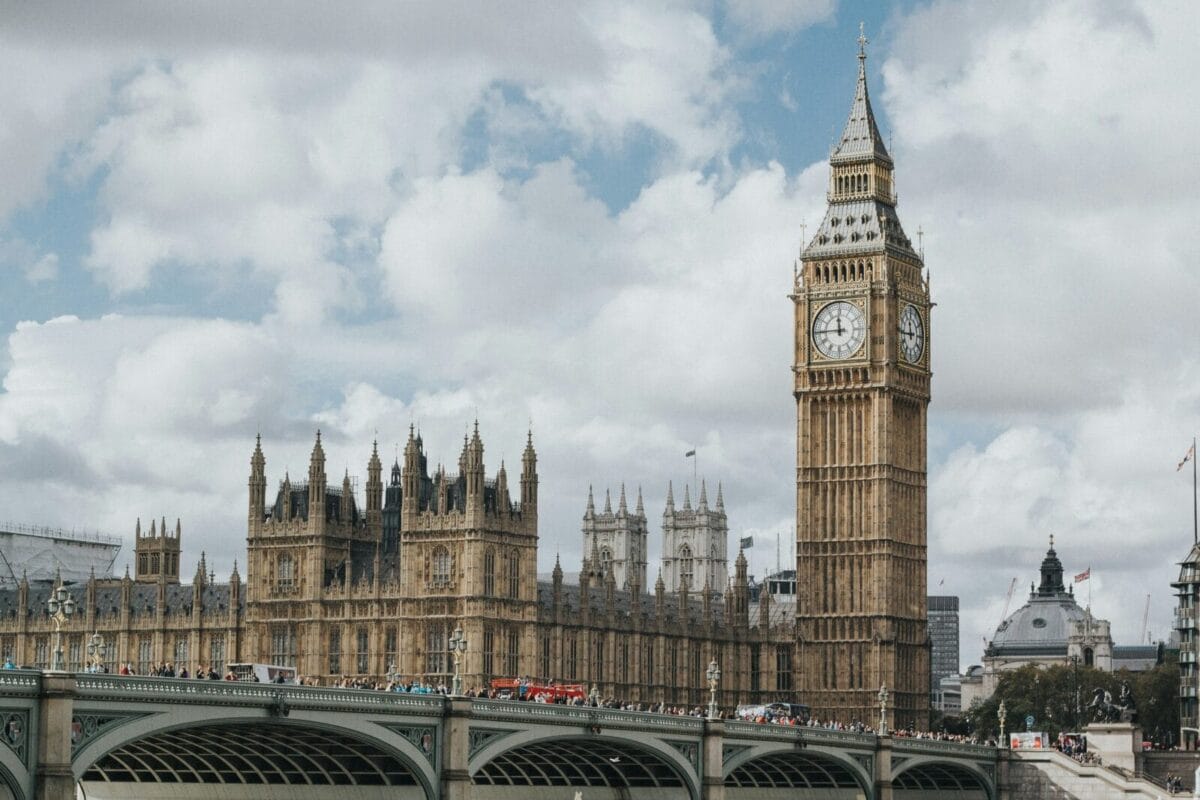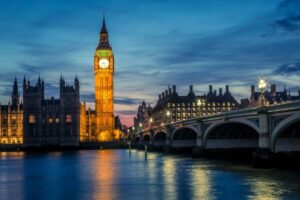Following the latest UK GDP data that showed a growth of just 0.1% in the three months to September – less than the 0.2% expected – with the economy contracting 0.1% in September, industry experts have shared their thoughts.
Danni Hewson, AJ Bell head of financial analysis, comments: “The start of the year looked so promising as the UK economy hurtled back from a short and shallow recession with relatively chunky GDP growth. But that momentum was short lived, and the honeymoon period often enjoyed by a new government fizzled out under the damp weight of uncertainty and hard truths.
“There were a few bright spots, as construction output grew 0.8% over the third quarter, buoyed by infrastructure projects, and there are signs that housebuilding should pick up over the coming months thanks to two interest rate falls and a promise to reform planning, but even amongst housebuilders there is concern that build costs are creeping up.
“The government might desire growth and the chancellor might have been making more of the right noises during her Mansion House speech last night, but many businesses fear measures taken in her first Budget could have the opposite effect.
“Nervousness from households ahead of the Budget dampened consumer behaviour and even though the retail sector did pick up in a bit in September people were being cautious, especially when it came to those nice personal investments such as haircuts and manicures.
“For business the spectre of higher taxes was already pushing many companies to employ a wait and see approach when it came to investment and hiring plans. The big question is what will happen to those plans now the dust has settled and the numbers have been crunched.
“Company after company have warned that the increase to employer NI will inevitably impact their headcount and if more money is being paid in taxes there’s less money to spend on growth.
“Change takes time and increased investment in things like public services will have an impact. But change can also have unintended consequences and at the moment the UK economy looks like it’s back on life support.”
Abhi Chatterjee, Chief Investment Strategist at Dynamic Planner said: “And the headache called growth continues – a measly 0.1% in the three months to September. However, one would have to be an indomitable optimist if one expected it to be any better. The ongoing concern around manufacturing growth has been nothing new, with the services, mainly retail and construction, propping up the economy. Few would have expected any impact of the government’s policies to have an impact on the economy already, with concerns around higher NI contributions by corporates affecting businesses, but this is countered by the modest increase in business investment of 1.2%. The major issue is one of consumer confidence which has fallen on the rhetoric around anticipated tax rises – this remains the foremost hindrance to consistent growth along with the spectre of rising inflation, though there are signs of increasing household spending. It largely remains a wait and watch game, with all participants of the economy almost putting their spending on hold to see how the policies pan out. As the saying goes, hope springs eternal.”
Derrick Dunne, CEO of YOU Asset Management, comments: “While this is good news, it is a far cry from shoot-the-lights-out good. We’re not out of the woods yet. This morning’s quarterly figures are pre-Budget and it remains to be seen what, if any, knock-on effect that might have had. These modest green shoots of economic growth may not last a post-Budget winter.
“That said, in its notes on the decision earlier this month to make a small cut to the base rate, the MPC said it sees only a small effect from the UK Budget on prices, and a similarly limited downward pressure on wages caused by the hike to employer National Insurance. This is a positive signal.
“However, the additional note of caution to sound here is that renewed dollar strength and higher import tariffs following Donald Trump’s win in the US presidential election threatens a fresh bout of global inflation, adding further question marks over just how sustainable this modest growth actually is.
“Anyone unsure about what this means for their savings and investments should speak with a qualified financial adviser.”
Joaquin Thul, economist at EFG Asset Management, commented: “UK GDP grew by 0.1% in Q3, decelerating in relation to 0.5% growth attained in Q2. However, real GDP was estimated to have grown by 1% in relation to the Q3-2023. Although growth remained positive over the last quarter, the decelerating trend in UK growth continues, making things difficult for the new government which has put growth as their number one priority.
“Despite both the services sector, which accounts for over 2/3 of the economy, and construction sector grew during the quarter, 0.1% and 0.8% respectively, this was partially offset by a decline in the production sector by 0.2% in Q3. From an expenditure perspective, there was a positive contribution from net trade, household and government consumption and business investment.”
Ed Monk, Associate Director, Fidelity International, comments: “Today’s dip in the growth rate shows the task that lies ahead for policymakers – the economy shrunk month-on-month in September and barely grew at all in the third quarter overall. The Government has emphasised the need for growth but right now even the modest official forecasts of a 2% rise in GDP next year would represent a significant improvement on the current trend.
“The fact the economy is still growing on a quarterly basis does offer some encouragement, especially with interest rates due to fall and help activity in the next year. Underlying data has been mixed with retail activity seeming to be picking up but with fewer job vacancies and unemployment ticking higher. Meanwhile, taxes on employers are due to rise from April and there may also be new trade policies from the US to navigate following Donald Trump’s victory in the presidential election.”
Amy Knight, personal finance expert at NerdWallet UK, said: “Despite slow growth in the third quarter and real GDP per head remaining flat, the UK is ready to put its best foot forward following a period of economic unsteadiness.
“Financial uncertainty in the build-up to the Budget left individuals cautious to spend, invest, or make longer-term financial decisions, contributing to the disappointing GDP. For many, homeownership goals were put on pause while interest rates were high and changes affecting first-time buyers were uncertain. Visibility of what the new government plans to do has left many disheartened, despite hopes that greater clarity would lift consumer confidence, accelerating growth in the short term.
“Changes to stamp duty thresholds for first-time buyers are set to take effect in April 2025, increasing upfront costs and creating bigger barriers for many. However, the outlook for existing homeowners is brighter after UK house prices hit an all-time high. When house prices rise, homeowners feel wealthier, boosting economic activity and contributing to GDP growth. The April increase in the National Living Wage will support workers at lower income levels to enjoy a little more discretionary spending, helping to turn the wheels of the economy and boosting GDP.”
Lindsay James, investment strategist at Quilter Investors: “With the budget now firmly in the rearview mirror and the Chancellor reinvigorating her message of growth with the Mansion House speech, today’s quarterly GDP figures highlight the malaise the UK still finds itself in. Despite good momentum early this year, growth has stumbled once again, growing just 0.1% over the last three months, with September actually seeing a contraction. Much of this will have been as a result of the gloomy messaging that was persistent in the run up to the budget, causing consumers and businesses to pause spending and await what pain was to come.
“However, it is now not as simple as just getting back on trend. There are rising risks to the UK economy as businesses are being asked to stomach much of the required fiscal expansion. Unemployment figures have ticked up to 4.3% and with NI changes yet to fully bed in, businesses are warning things could get worse. The economic malaise we have become accustomed to could be here to stay a while longer.
“Now there are things that Labour is doing to stimulate things alongside its tax rises. Planning reforms should eventually help while it has got the right idea by focussing on infrastructure investment as step one in improving the productivity of the economy. The only problem is if a consolidated pensions system is the way to do this or if there are more efficient ways to bring in private investment.
“Finally, there is a large cloud on the horizon for the economy in the shape of Donald Trump. Thankfully for the UK it may well be quite insulated from his proposals to slap tariffs on just about every and any good made outside of the US. UK firms predominately export services rather than goods to the US which might see them protected from tariffs to a greater degree despite the US being our biggest export market. It could also lead to strengthening trade with the EU as well as retaliatory measures, so the UK may just be protected enough that GDP is not hit badly. However, as is Donald Trump’s style, the UK will need to prepare for the unexpected.”
Douglas Grant, Group CEO of Manx Financial Group, said: “UK GDP data shows sluggish economic growth, reinforcing expectations for another interest rate cut by the Bank of England. While this policy shift could create opportunities for UK investments, challenges persist. Elevated input costs and potential inflationary pressures, stemming from both the Chancellor’s initiatives and President Trump’s trade tariffs and tax policies, mean businesses must recalibrate their lending strategies to navigate an uncertain economic landscape effectively.
“Research from Manx Financial Group highlights a mixed picture: nearly a third of UK SMEs have paused or scaled back operations due to financial constraints—an improvement from 40% in 2023, yet a noteworthy portion of these businesses (around 10%) still face difficulty accessing external financing. Given the pivotal role SMEs play in driving economic growth, job creation, and innovation, it is critical for the Labour Government to cultivate a supportive lending environment that encourages their resilience and expansion. Both traditional and alternative lenders have a role to play; any inadequacies in financing may stymie recovery amid a backdrop of rising taxes, geopolitical uncertainties, and ongoing cost-of-living challenges.
“Monetary easing offers SMEs a valuable window to secure affordable credit, strengthening their capacity to adapt as the broader fiscal and economic environment evolves.”
Luke Bartholomew, Deputy Chief Economist, abrdn, said: “The economy was always going to slow from the famously “gangbusters” pace of the first half of this year, but the extent of the slowdown is a bit more pronounced than expected. With activity growth in September being reported as particularly weak, it is plausible that some of slowing is the result of elevated uncertainty at that time, as firms and households speculated about possible tax changes ahead of the Budget. That said, it is also possible that this just represents normal monthly volatility rather than anything more fundamental. In any regard, the contents of the Budget ended up somewhat boosting the growth and inflation picture for 2025, and so in that context these data will probably do little to change the thinking at the Bank of England. We continue to expect further gradual easing, with the next rate cut coming early next year.”















